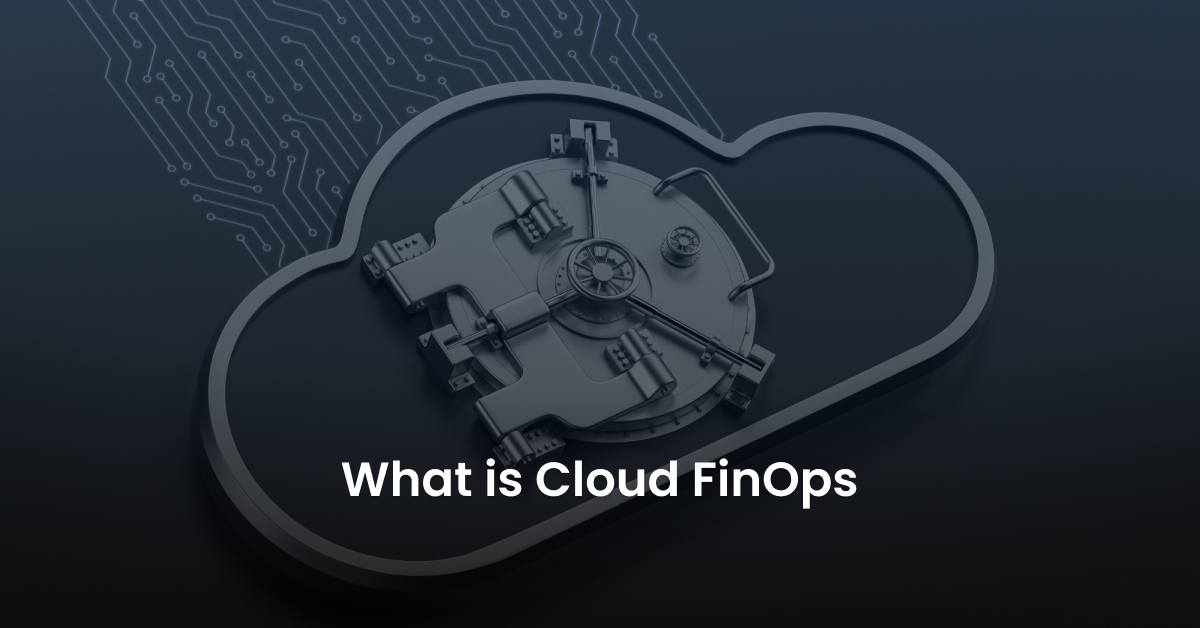Cloud FinOps is a cloud financial management system aimed to achieve maximum business value. It is a cultural practice that combines the best practices and organizational culture to achieve financial accountability to the variable spend model of the cloud. This operational framework brings together business, finance, and technology together to accelerate business value and drive financial accountability.
At its core, Cloud FinOps enables enterprises to understand the complexities and challenges of cloud IT financial management. This practice centers around optimizing cloud spend to get maximum value for your organization. These may include techniques such as utilizing free credits, negotiating lower costs, using the least priced services, forecasting costs, and more.
Cloud FinOps brings together cross-functional teams in a collaborative effort to optimize costs. These teams range from DevOps, IT, and finance to management. By working in a close-knit model, it’s possible to address cloud costs across the organization.
How Do Cloud FinOps Work?
Cloud FinOps has a subtle approach to managing costs. It involves three crucial steps:
- Inform
- Optimize
- Operate
This lifecycle ensures teams stay organized and focused on financial accountability and delivering business value.
Inform
The Inform phase is all about informing the organization of all cloud costs, which happens through delivering complete visibility and allocating cloud costs to respective business units. The main goal here is to help everyone understand their spending.
This phase also involves benchmarking against internal goals such as forecasts and budgets. It also shows where the organization is achieving business value and where it isn’t
Optimize
After everyone is aware of the costs, business goals, and the value achieved by the business, they can move on to optimize costs. This phase involves providing actionable insights and recommendations to the various teams.
In this phase, the organization cuts unnecessary services that escalate costs. It also automates the rightsizing of resources and optimizes the utilization of available resources. These steps help cut costs significantly.
Operate
The final phase involves architecting your cloud environment to achieve minimal cloud spending. The organization builds governance policies and a structure to achieve business, financial, and technological goals.
The goal of this phase is to achieve continual improvement and measurable goals.
Fundamentals of FinOps Systems
Integrating cloud systems with financial accountability aims to reduce costs while optimizing cloud efficiency. The fundamentals of cloud FinOps are:
Cost analysis: each team player in the organization can understand cloud spending and the various factors that escalate costs.
Planning resources: organizations can rely on current and historical data to forecast costs.
Real-time decision-making: organizations can rely on real-time data to make accurate business decisions.
Principle of Cloud FinOps
To understand Cloud FinOps completely, you need to know the principles of the design. These include:
Teams Need to Collaborate
For FinOps to work, there has to be a seamless collaboration between teams. For instance, the finance, development, management, and engineering teams should work hand in hand. Both teams should also continuously improve their efficiency and innovation in line with each other.
When all the organization’s stakeholders collaborate for a common purpose, it’s easier to achieve the set goals. Teams drive better results as they have a unified view of the organization’s cloud spending. Therefore, one of the priority goals is to work together and aim in the same direction.
A Centralized Team Drives FinOps
Centralized teams make decisions as a unit. Also, it’s easier to follow a similar goal when working from a centralized point than when different teams operate independently.
A successful FinOps practice requires all departments to operate together. Development and engineering teams can share roadmaps with finance and management teams. In addition, teams achieve better communication and can set KPIs that cut across each team.
Everyone Takes Ownership of Their Cloud Usage
Cloud FinOps requires accountability access for all teams. Each team should understand and own its spending, which eliminates blame games and enables different teams to work towards achieving set goals. Also, teams can track their targets to achieve accountability.
Decisions Driven by the Business Value of Cloud
Making crucial decisions can make or break an entire organization. FinOps-driven organizations ought to make decisions driven by the business value of the cloud and not cost. Focusing entirely on cost can shift the focus of the business. For instance, an organization is better at improving the reliability of its services if it means an increase in spending.
Ideally, an organization shouldn’t trade off value and quality for costs.
What Are the Challenges of Cloud FinOps?
While FinOps is a desirable approach, it can be problematic for most teams. Achieving cloud financial management without sacrificing innovation and reducing business value is a massive challenge.
Most teams end up in blame games and experience barriers to achieving business value. Some of the challenges include:
- It’s difficult to understand cloud costs
- You cannot trade-off innovation for low costs
- DevOps teams may not fully understand the financial processes
- Financial teams may fail to understand the development capabilities required
The huge variation between different teams makes the FinOps culture challenging.
The Bottom Line
FinOps framework can transform your business in all aspects. It optimizes your organization’s financial health and drives business value. To achieve this, you need to adopt the best practices possible.
At nOps, we help you deliver FinOps in two ways. First, we provide a wide range of cost optimization capabilities to help you keep cloud spending to a minimum. In addition, we provide the ShareSave feature that enables your team to optimize cloud costs continuously with smart Reserved Instance planning.
Start your nOps free trial today, or schedule a demo to see it in action.



